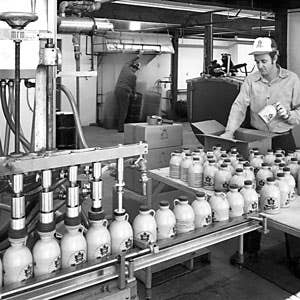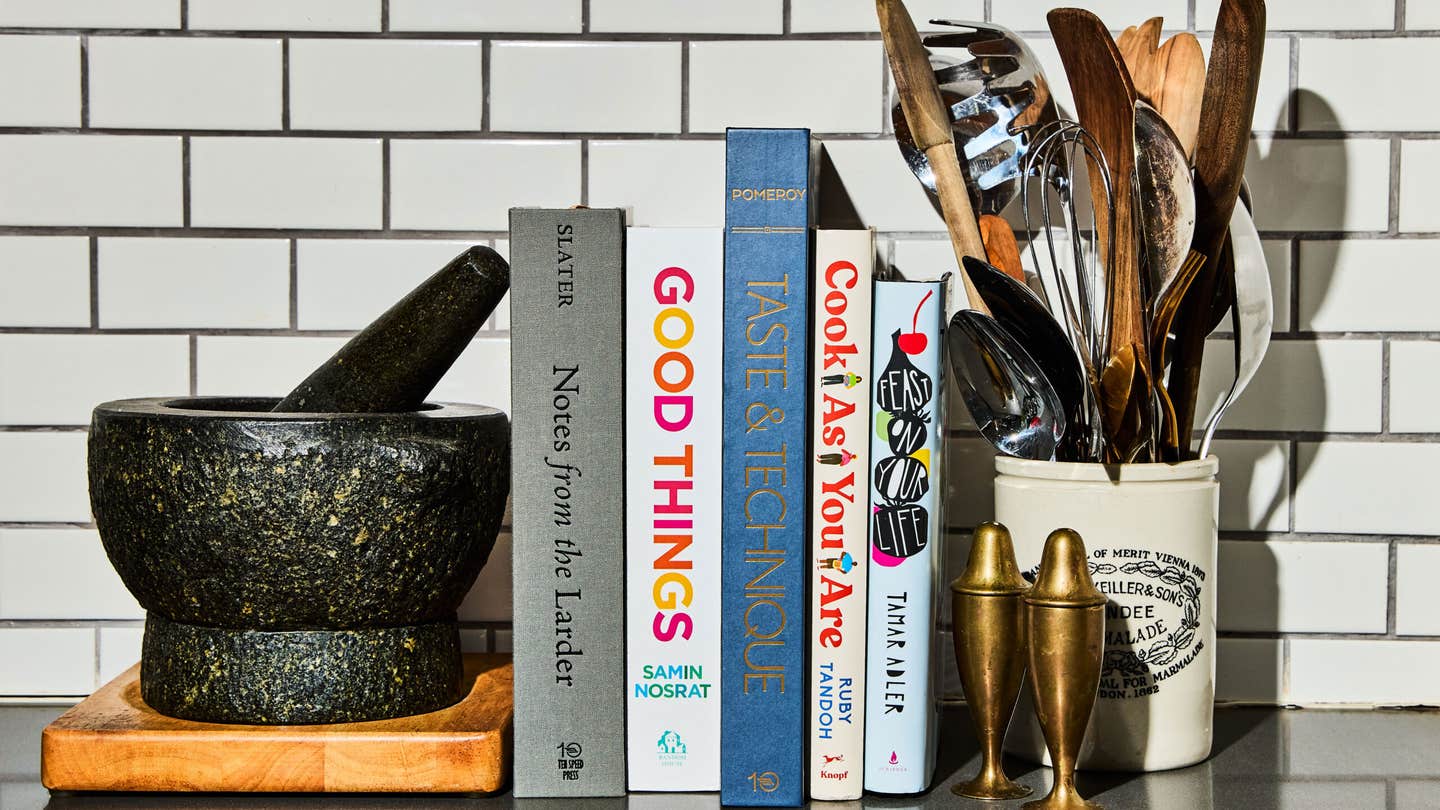
Maple Syrup Still On Tap
High-tech methods haven’t changed the taste of this uniquely American food.
Bruce Bascom and I are standing on top of the world. Or so it seems from this windswept plateau in the Monadnock Mountains—about as far west as you can go in New Hampshire without stumbling into Vermont. Spread out below us is a pointillist's blur of russet, gold, and orange—the colors of the sugar maples and red maples that cover much of this area's landscape.
Every spring, Bascom—whose Bascom Maple Farms is one of the largest maple syrup producers in New England (and thus in the nation)—taps these trees to make maple syrup, butter, sugar, and candy. It is the syrup that interests me most, and I've come here to learn how maple sap is turned into this most intense of foods.
Like many of my generation, I grew up drenching my waffles with "table syrups", artificially colored mixtures of corn syrup and preservatives. They're sweet and amber, but their maple content—if it's there at all—rarely tops 2 percent. It wasn't until a friend of mine from upstate New York poured some pure maple syrup over my plate of potato latkes one morning that I realized what I'd been missing. Now, I don't think twice about paying a premium for a 16-ounce jug of real maple syrup.
There are about 150 species of trees in the maple family, in various parts of the world. Only in North America, however, and especially in the northeastern United States and southeastern Canada, do climate and geography conspire to create trees that provide enough sap to justify a syrup industry. For maple trees to produce commercial quantities of sap with a sufficiently high sugar content, there are four criteria: cold winters, a springtime snow cover, chilly night temperatures, and plenty of year-round sun. These conditions are found in places like southern Quebec and Ontario and the states of Vermont, New York, and Maine—and these happen to be the top maple syrup-producing regions.
The sap of maple trees has sweetened American foods for centuries. By the time the Europeans arrived in America, native Indians already had well-established methods for turning it into both syrup and sugar. The Abenakis, in what is now Vermont, for instance, are said to have tossed white-hot rocks into sap-filled vats to "boil" down the liquid. In 1557, Andre Thevet, the royal cosmographer of France, sampled American maple syrup and likened it to "the good wines of Orleans or Beaune."
This indigenous sweetener quickly caught on in the colonies. It tasted great, and was more readily available and less expensive than the heavily taxed cane sugar coming in from the West Indies. And it had another advantage for at least some colonists: Unlike cane sugar, maple syrup wasn't produced with slave labor. By the late 1700s, maple sap was a major cash crop. Beginning at the turn of the 19th century, though, cane sugar prices dropped and the popularity of maple products suffered. In the 1940s, the maple syrup industry developed the so-called table syrups, and these, for the most part, replaced real maple syrup on the tables of America. Many people obviously like these syrups—but I'll bet that's only because they have never tasted the real thing.
Bruce Bascom's family has been making pure maple syrup in the Monadnock Mountains since his great-grandfather built a house there in 1853. For as long as Bascom can remember, his life has revolved around the "run"—the annual spring harvest of the maple trees' sap. In the early 1960s, like the children of other local maple farmers, Bascom would get pulled out of school for a few days every year to help with the run. But these breaks from school were no holiday; he'd spend the time working long hours, hauling heavy buckets from the trees to the sugarhouse, often through deep drifts of snow.
Things are different today in the maple business. Most large producers have updated their operations with modern harvesting and processing technology. Bascom's 1,850-acre, 15,000-tree farm, for example, is crisscrossed by about a hundred miles of green plastic tubing that taps and carries the flowing sap directly from trees to storage tanks. It looks like an environmentalist's nightmare, but Bascom assures me that it's quite the opposite. While some "home" or "boutique" tappers still do it the old-fashioned way, with tin spigots, white pine buckets, and treks through the snow, the modern approach is easier for the farmer, less traumatic to the trees, and much more efficient.
Syrup-making starts when the sap, which is a clear mixture of sugar, water, and various nutrients that nourish a tree's young buds, begins to flow throughout the maple's trunk as the tree's roots begin to thaw—usually in early March. Most maple farms contain a variety of maples, but the most valued tree is the generous sugar maple, which can provide up to ten gallons of sap per season. Taps inserted into the tree's trunk provide an exit for the bubbling liquid. During the six-week season, the sap flow takes place for only ten to 20 days and is irregular, often with up to a third of the season's take coming through in a single day.
The character of the sap also varies during the run. Sap drawn early in the run is generally lighter in color and sweeter than the darker, stronger-flavored sap that's drawn near the season's end. Syrups are graded in three categories: "Fancy" or "extra-light" is the most delicate; "grade A medium amber" or "grade A dark amber" is a bit more robust; and "grade B", also called "amber" or "dark amber", is the most assertive. Just before the supply begins to peter out, the sap takes on a bitter flavor. Soon afterwards, the trees start conserving the liquid to nourish their developing leaves.
When it reaches a modern sugarhouse, the sap is pummeled through a room-size reverse osmosis machine that sucks out two-thirds of its water content, so it needs less boiling down, thus saving both fuel and time. From the osmosis machine, the sap flows to an evaporator, where it's reduced to a syrup, and takes on its typical rich cognac-brown hue. Large sugarhouses can process as much as 1,700 gallons of sap an hour, but you still need ten gallons of sap to produce just one quart of pure maple syrup—a fact that helps account for its high cost.
While real maple syrup may never again be able to compete in price with cane sugar (or with the artificial sweeteners that seem to have so much appeal to the American consumer today), its taste is irreplaceable. Whether it's an extra-light poured over vanilla ice cream, a medium amber drizzled over a stack of buttered pancakes (or latkes), or a dark amber glazing a ham, pure maple syrup is always worth the price.
Keep Reading
Continue to Next Story










